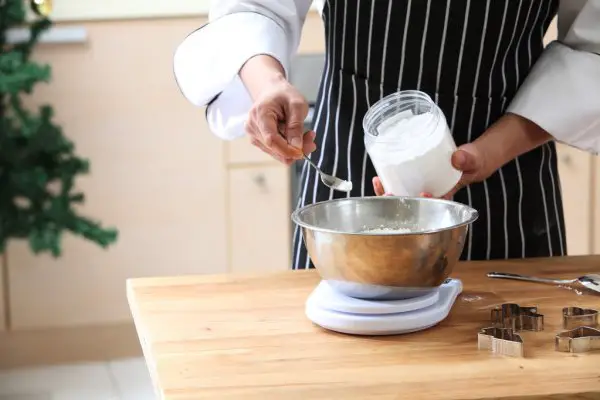
Having all your baking ingredients is key to quality, fluffy, and light pastries or desserts. Baking powder is one of the must-have ingredients that helps to lighten the texture of your baked items as well as add volume to them. However, what happens when you have all the ingredients ready, but realize that your baking powder has run out and you don’t have time to go to the shop?
You don’t have to worry about your baked items losing the volume or texture as there are substitutes you can use in place of baking powder which are all readily available in your kitchen, such as buttermilk, lemon juice, and egg whites.
Read on to learn more about some of the best baking powder substitutes available, as we cover 14 of them. We also go into detail to discover what baking powder is made of and the different types available in the market.
What Is Baking Powder?
Baking powder is a type of leavening agent composed of sodium bicarbonate paired with an acid like the cream of tartar or sodium aluminum sulfate. Some types also contain cornstarch.
When baking powder is combined with water, it causes a chemical reaction that leads to the production of carbon dioxide. That leads to the formation of bubbles and causes the dough to expand, hence leading to added volume in baked items like bread and cakes.
What Is the Difference Between Baking Powder and Baking Soda?
Although both baking powder and baking soda function as leaveners by creating gas that gives light crumb and airy texture, they are different. You cannot interchange the two ingredients despite them offering the same results. That’s why some recipes ask you to use both ingredients.
Baking soda consists of pure sodium bicarbonate, which is a white crystalline powder. However, for its leavening agent to be activated, you need to combine baking soda with an acidic liquid or ingredient. That’s the reason recipes with baking soda ask you to pair it with vinegar, lemon juice, or buttermilk. You can also use an acidic ingredient like honey or brown sugar.
However, baking powder consists of sodium bicarbonate and an acid to make it a complete leavening agent. It has the acid and base required to make baked products rise. Some brands add cornstarch in baking powder to prevent the ingredients from activating during storage.
Single Acting vs. Double Acting Baking Powder
When shopping for baking powder, you might find it confusing to choose the single-acting or the double-acting baking powder.
The single-acting baking powder, when mixed with water forms, bubbles the minute you combine the ingredients. However, if you delay baking the food or happen to over combine your ingredients, the bubbles disappear and you end up with flat baked goods.’
Double-acting baking powder forms bubbles when you mix the ingredients. The difference is that the rising happens once the baking powder meets with heat. It reacts twice the way ordinary baking powder does as it contains two types of acids and not one.
It has a slow-acting acid that acts slowly at a high temperature and a dry acid that reacts quickly at a regular temperature when combined with a liquid. This type of baking powder is recommended for home baking as it makes your recipe less susceptible to failure if you don’t preheat the oven.
Most stores stock the double-acting baking powder, while the single-acting baking powder is common in commercial uses. Note that you can’t use the double-acting baking powder as a substitute for the single-acting one.
How to Make Baking Powder
Baking powder is a baking essential, did you know you can make your own baking powder? Making baking powder at home gives you an aluminum-free product, unlike the store-bought one that contains sodium aluminum sulfate.
If you are allergic to gluten, you can skip on the cornstarch and enjoy a gluten-free baking powder. Adding cornstarch means your baking powder will contain corn gluten, but it’s not the same type that affects people with gluten sensitivity or celiac disease.
Another reason you may want to make baking powder is the taste of aluminum you get in your baked items after using commercially-produced baking powder. Using our recipe means you’ll not have to worry about that taste as there’s no aluminum included. The secret is to only use fresh ingredients.
Here’s a simple method of how to make baking powder at home in less than a minute.
What You’ll Need:
- A teaspoon of baking soda
- A teaspoon of cornstarch
- Two teaspoons cream of tartar
Procedure:
Get a container, put in the cream of tartar and baking soda, and mix them until well combined. That should give you one tablespoon of baking powder.
You can add a teaspoon of cornstarch if you plan to store the baking powder. Adding cornstarch will help absorb moisture from the air and ensure that the baking powder doesn’t react or clump before use.
Once done, store the mixture in an airtight container to keep it fresh. If you want to make a large batch for your future baking needs, you can use two parts of cream of tartar to a part of baking soda. Don’t make a lot as baking powder loses its potency with time.
The recipe makes a single-acting baking powder. That means it will react when it comes to contact with a liquid in your baking recipe. Always use this baking powder at the end and place your baked items in the oven as soon as you’re done mixing the ingredients.
Testing Your Baking Powder for Freshness
Sometimes you may find yourself with a huge batch of baking powder. The challenge is knowing how to determine if it’s still okay to use in your recipes. Fortunately, you can subject the baking powder to the water test to determine its freshness.
All you need is a 1/3 cup of hot water and a half teaspoon of baking powder. Pour the baking powdering the cup of hot water and observe how it reacts. A mixture that’s bubbling up shows that the baking powder is good to use. Nonetheless, if the mixture is dormant, it shows that the baking powder isn’t fresh and you should discard it immediately.
Cream of Tartar
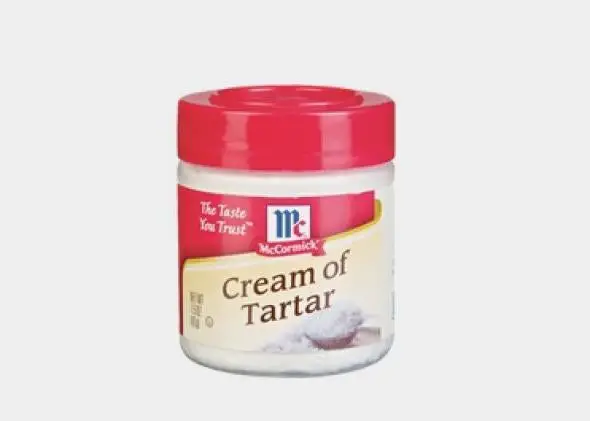
Cream of tartar is commonly used as a substitute for baking powder. It gets its name from tartaric acid, which is formed from the fermentation of wine from grapes. You can use cream of tartar for cleaning and baking. While at first, you may think of it as an ingredient in cream form, it’s actually in powder form. Cream of tartar is common in the spice section of the grocery store.
This baking powder substitute is used in meringue pies as it fastens the whipping process. It creates foam as the cream stabilizes the air bubbles of the egg whites required to achieve the meringue’s soft texture. Its acidic nature also adds volume to the egg whites when used in angel food cake.
Fresh cream of tartar should be powdery, have an acidic smell, and be white in color. You can also check the potency of it by stirring half a teaspoon of the cream of tartar in half a cup of warm water. Add a pinch of baking soda and watch the reaction. If it forms a nice foam, it means it’s still potent to use as a substitute.
You can make a substitute by combining two grams of cream of tartar or half a spoon to a quarter teaspoon baking soda. That combination is equivalent to one teaspoon of baking powder.
Buttermilk

Buttermilk is another ingredient that is used as a baking powder substitute. The ingredient goy its name from the liquid left after churning butter. Bacteria grow and begin to ferment the lactose found in milk. That resulting lactic acid gives the buttermilk a tart and zingy taste.
That’s why buttermilk is used in pancakes, scones, and soda bread as it reacts with the alkali in the bicarbonate of soda to form carbonic acid bubbles that cause the scones and bread to rise.
Buttermilk works well as part of a marinade when combined with oil and as a salad dressing.
There are two methods of making buttermilk. You can mix equal quantities of Greek yogurt with whole milk. Add some more milk to the acidic yogurt. Leave this for five minutes and allow the milk to ferment.
Alternatively, you can mix one tablespoon white vinegar or lemon juice and a cup of whole full-fat milk. Add the whole milk to the lemon juice and allow the milk to rest for five minutes to make buttermilk.
Whatever method you decide to choose, ensure that you add milk to the acid and not the other way round. Avoid overdoing the acid as you may get sour-tasting buttermilk. Remember to refrigerate the buttermilk if you plan to use it later.
Buttermilk is fantastic for making pancakes, doughnuts, biscuits, and salad dressings. You can also use it as a marinade for chicken.
Plain Yogurt
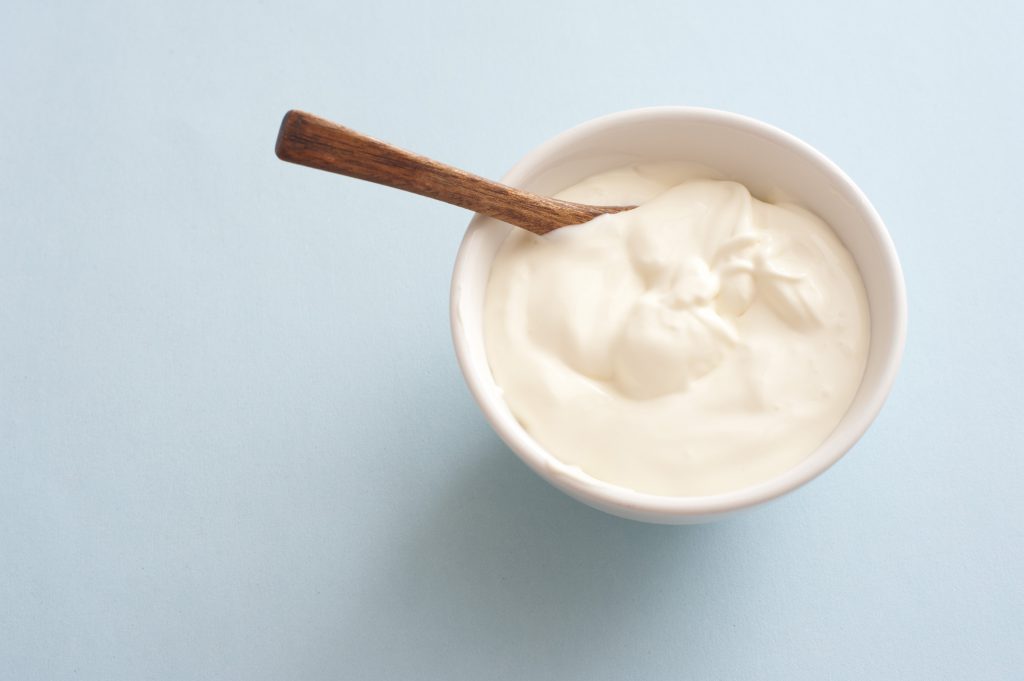
Plain yogurt is an excellent substitute for baking powder. However, you need to mix it with baking soda to raise its acidic pH. It works perfectly when you need to leaven your baked items without adding flavor.
Plain yogurt forms when fresh milk combines with bacteria, leading to a thick consistency. The fermentation process leads to the formation of lactic acid, leading to the sour taste.
When planning to substitute baking powder with plain yogurt, you need to avoid using flavored yogurt as the pH level needed for this.
If you are planning to make plain yogurt, you need to heat the milk to 180 degrees Fahrenheit to kill any microbes lurking in your milk. Remember that you need to have the right environment for bacteria to multiply.
Allow the milk to cool to 115 degrees. Put one cup of warm milk and three tablespoons of pre-made yogurt. Find lactic acid-forming bacteria like streptococcus thermopiles or Lactobacillus bulgaricus.
Stir the pre-made yogurt or yogurt starter with the other milk to spread the good bacteria. Pour the milk into bottles or jars and incubate for up to 9 hours. Place the jars in warm temperature as this promotes the growth of good bacteria. In nine hours, you’ll have thick and creamy plain yogurt.
You can use plain yogurt as a substitute by adding dry ingredients with a teaspoon of baking soda and half a cup of yogurt. The baking soda reacts with the plain yogurt to have a similar effect that baking powder has on the recipe.
Sour Milk
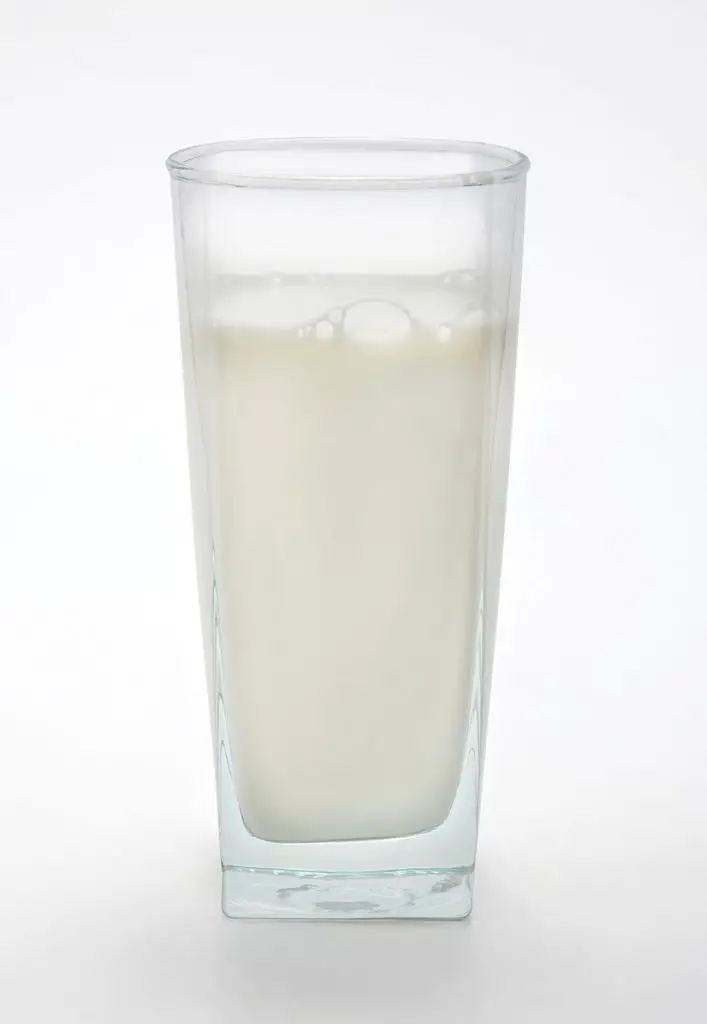
Sour milk is acidic and makes an excellent baking powder substitute. That’s because the milk undergoes acidification that leads to a decrease in pH levels. It’s this acidity that, when combined with baking soda, leads to a leavening effect on your baked items.
The amino acids present in sour milk get absorbed by the bloodstream. What’s more, the lactic acid bacteria reduces allergic reactions, unlike fresh milk.
If you don’t have spoiled milk, you can make sour milk for your baking recipe. You’ll need vinegar/cream of tartar, lemon juice, fork, and a measuring spoon. However, if you plan to sour milk for sweet recipes or pancakes, avoid adding vinegar to the milk.
Decide on the quantity of milk you want to sour and heat it in the microwave. Ensure it’s a bit warm or allow it cool to room temperature. Put in a half tablespoon of cream of tartar and a tablespoon of vinegar or lemon juice to the slightly warm milk.
When using the cream of tartar, ensure that you whisk it for some seconds for it to dissolve. Allow the milk to rest on the counter for five minutes until it starts to curdle, which shows that it’s ready to use. Mix the sour milk to your dry ingredients or stir it into wet ingredients as your recipe states.
Lemon Juice
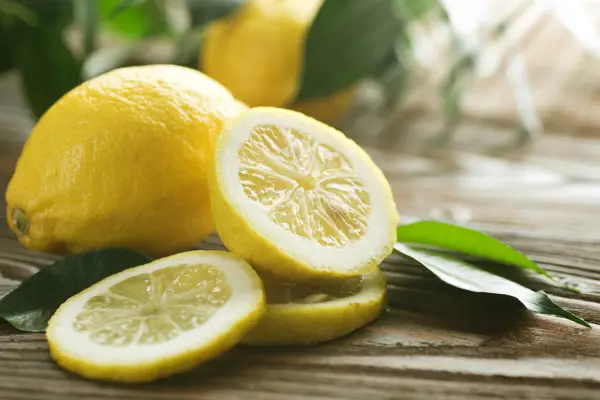
Lemons are readily available and make one of the best baking powder substitutes. The reason why lemons make an excellent alternative is their high citric acid content. Lemons are very acidic in nature, which produces the leavening action required for baking.
However, you should note that when using lemons, they have a strong taste, which may reflect on your baked items. Be careful with the amount of lemon juice you use.
To substitute lemon juice for baking powder, you need to mix half teaspoon of lemon juice and a quarter teaspoon of baking soda. That ratio equals one teaspoon of baking powder. It’s best to use lemon as a substitute for recipes that don’t require lots of baking powder.
White Vinegar or Apple Cider Vinegar

White vinegar is a common item in the kitchen. You can use apple cider, balsamic, white, and red wine in place of vinegar. Vinegar goes through a fermentation process that converts alcohol to acetic acid.
What makes it an excellent substitute for baking powder is its acidic pH. When paired with baking soda, it produces that leavening effect that makes it excellent for cookies and cakes. Although you can settle for any vinegar, white vinegar is perfect due to its neutral taste. Also, it doesn’t change the color of your baked goods.
Get a quarter teaspoon of baking soda and mix it with a half teaspoon of vinegar. Use this mixture in your dry ingredients to create that puffing effect on your cookies.
Self-Rising Flour
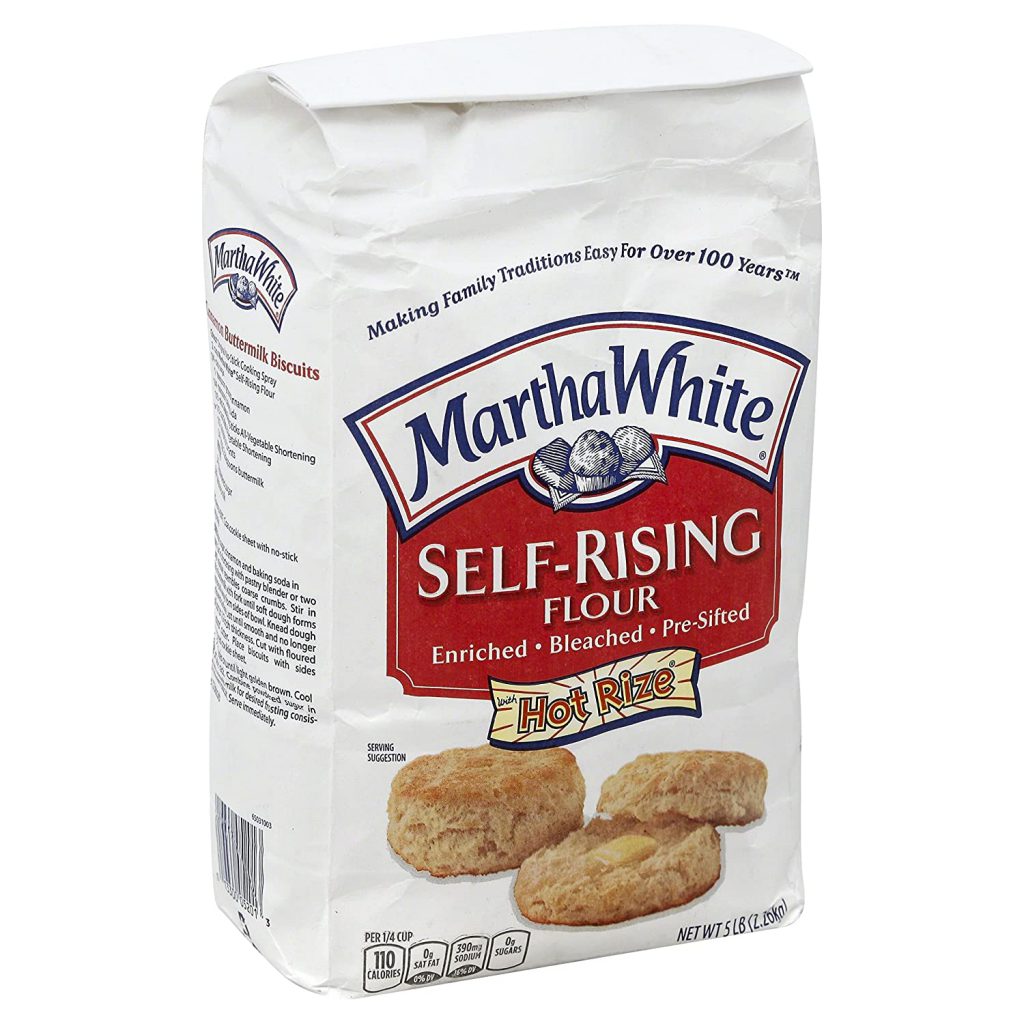
Sometimes you may find out that you don’t have baking powder or baking soda in your pantry. The next best alternative is self-rising flour, a mixture of baking powder, all-purpose flour, and salt.
The baking powder content in the flour gives that puffing effect in your cakes and pancakes. You’ll find it in grocery stores packed with biscuit mixes, quick bread, and cake mixes.
You can also make self-rising flour at home by mixing a cup of all-purpose flour with one and a half teaspoons of baking powder and a quarter teaspoon of salt.
All you need is to replace the flour you were planning to use in your recipe with the self-rising flour. You don’t need to add any baking soda or baking powder to give your pastries that even rise.
Wheat Flour
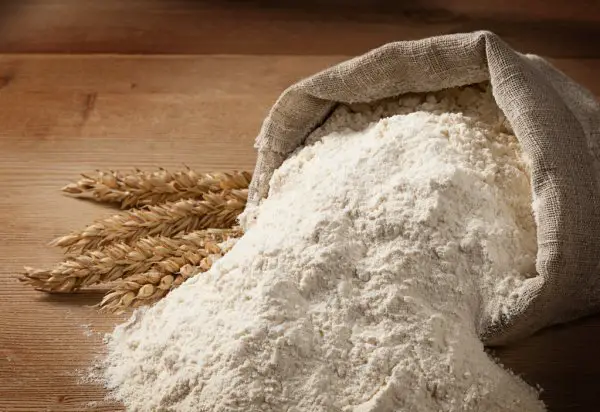
Wheat flour can be a substitute for baking powder. However, you should note that its heavy consistency can be a challenge. That’s because it may fail to work for light pastries and cakes, but it’s excellent for muffins and bread.
If the recipe calls for baking powder, replace the normal flour with wheat flour and add baking soda. Follow the rest of the recipe as indicated, but omit the baking powder.
Molasses
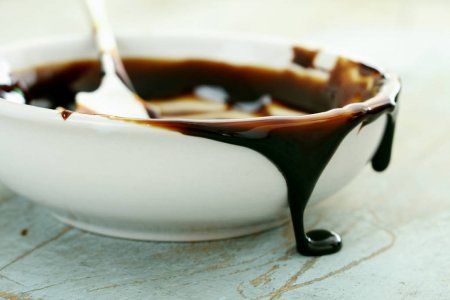
Molasses as a sweetener forms when sugar cane juice is boiled, the crystals are removed, and the thick brown colored syrup remains. It’s used in baking recipes for cookies, cakes, and bread. The product contains calcium, selenium, potassium, iron, copper, manganese, and other calories.
Note that molasses isn’t acidic, you’ll need to mix it with baking soda. That reaction gives you the same leavening effect as the baking powder.
You’ll need to combine a quarter cup of molasses with a quarter teaspoon of baking soda to make a teaspoon of baking powder. Remember that molasses is in liquid form, which means you need to reduce the quantity of the rest of the liquid ingredients. Also, reduce the number of other sweeteners as molasses is high in sugar.
Whipped or Beaten Egg Whites
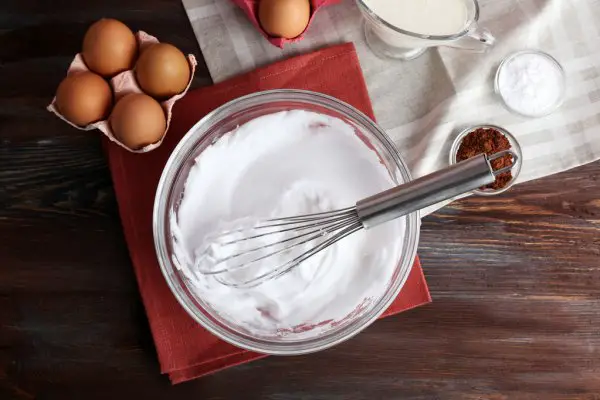
Whipped egg whites create that airy and light texture to most baked goods that make it an excellent substitute for baking powder.
What makes the baked goods airy is the whipping process that creates small air bubbles that increase lightness and volume. The whipped egg whites are perfect for specific types of cakes, pancakes, soufflés, and meringues.
Note that the number of eggs you need will depend on your recipe. For example, making pancakes requires three eggs, while making angel food cake will require up to 10 whipped egg whites. Ensure that you beat the eggs at a low speed to make them fluffy and light. Check to see they are foamy and increase the speed until the eggs form soft peaks. Add the remaining ingredients into the egg whites to add volume to your baked items.
Club Soda
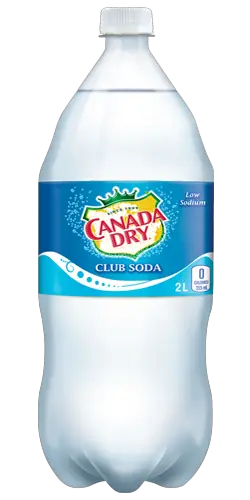
Club soda, also known as carbonated water, is put in carbonated drinks to give a fizzy effect. Ts sugar-free and acidic nature makes it a fantastic substitute for baking powder. Club soda has baking soda, which is another reason you should use it in place of baking powder. You can use it when you don’t have baking soda or baking powder.
Nonetheless, you should note that club soda doesn’t have lots of sodium bicarbonate. That means you can only use it for recipes that need a little volume.
You need to replace the liquids in your recipe with club soda in a ratio of 1:1. Club soda can also be used to replace water or milk in your recipes as it adds volume to your baked items. Note that you need to do your homework to determine the amount you need to use on your recipe. That ensures you get the desired results after baking.
Cornstarch
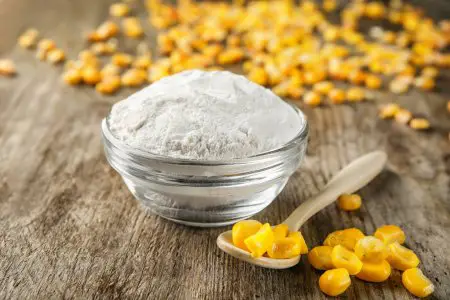
Cornstarch is a powdery, white substance commonly used in most recipes. It helps to absorb moisture from condensation, the reason why it’s used as a thickening agent. Cornstarch is used in baking to thicken pie fillings and also adjust the texture of baked goods. It’s used together with flour to soften the floor, resulting in crumbs without the baked goods falling apart.
You can add cornstarch to your flour to make the baked goods tender. Cornstarch can be used as a substitute to make baked items gluten-free. Note that you need to use less as both ingredients absorb liquid in varying amounts.
Baker’s Ammonia
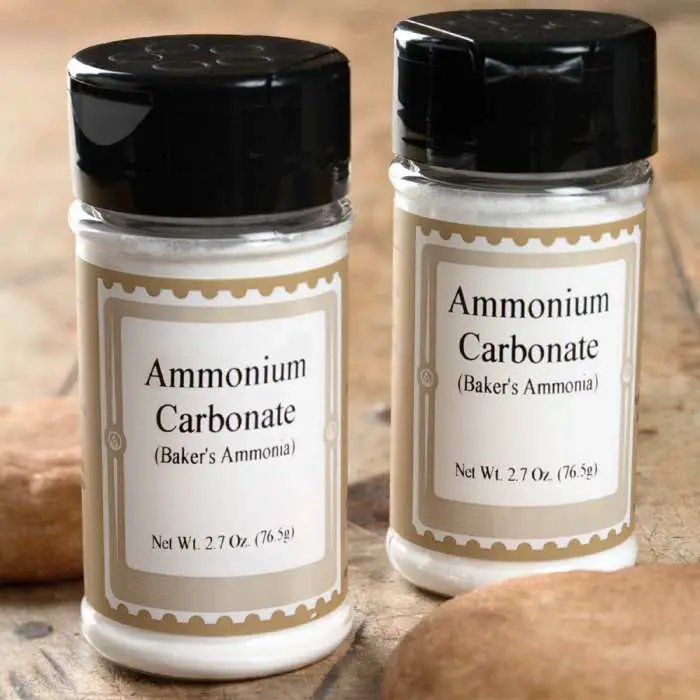
If you’re looking for a leavening agent that’s been used for years, you’ll want to check out baker’s ammonia. Back in the 13th century, people used this ingredient as a leavening agent. They used it as a substitute for baking powder.
Baker’s ammonia is a fantastic choice if you’re looking to give baked foods that crispy touch. This ingredient works perfectly when baking cookies and some cakes. What’s more, the ingredient has health benefits like stimulating the respiratory system and relieving bronchitis symptoms.
The ingredient has a similar effect to double-acting baking powder as it breaks down with heat to leaven food.
If baking powder isn’t available, the baker’s ammonia can be substituted in a 1:2 ratio. You can also add a little baking soda to the baker’s ammonia to create that leavening effect.
Xanthan and Guar Gum
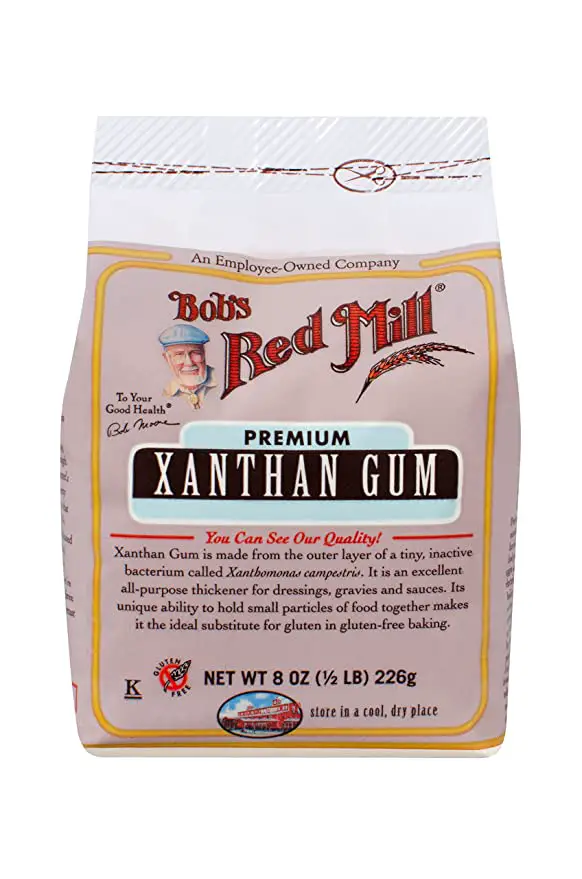
Xanthan and Guar Gum are commonly used for gluten-free recipes as they work as emulsifiers and thickeners. Although you can choose to use one, it’s recommended to use both the ingredients for the best results.
Individuals suffering from celiac disease or gluten sensitivity, Xanthan gum, act as stabilizing agents to help them enjoy different foods. The gum adds the tackiness to batters and doughs.
Xanthan helps starch to trap air and guar gum keeps the huge particles released in the mix. Xanthan Gum is a good choice for yeasted bread as baked goods with high acidic content can make guar gum lose its thickening abilities.
Like baking soda and baking powder, a small quantity of Xanthan gum doesn’t do the trick.
You can replace baking powder in the muffin, cake, and quick bread recipes by adding 1/2 teaspoon of Xanthan Gum per cup of gluten-free flour. For pizza and bread dough recipes, add a teaspoon of Xanthan gum to a cup of flour. When handling cookie recipes, add half a teaspoon of Xanthan to a cup of flour.
Yeast

Dry yeast is another baking powder substitute as it’s not only simple to use, but it’s also effective. You don’t have to worry about terrible side effects as the ingredients don’t have chemical compounds.
Moreover, dry active yeast is rich in calcium and Vitamin C. It adds that leavening action to your cookies, which is similar to the effect you get when using baking powder. Yeast doesn’t add that tangy, butter flavor to your baked items, which means that they retain their sweetness.
Health-oriented people will love yeast as it doesn’t contain gluten. However, you should note that you need to figure out the quantity to use when using yeast as not all recipes will work when using yeast.
You may also have to deal with gas and bloating when you substitute dry active yeast for baking powder.
If a recipe calls for baking powder, you can substitute it for a teaspoon of yeast and half a teaspoon of baking soda. Adding these ingredients to the flour will help make the dough rise. Using yeast as a baking powder substitute works well for recipes that include bread and rolls.
Best Substitutes to Use in Making:
Pancakes
If you don’t have baking powder and would like to make pancakes, you can use whipped egg whites as a baking powder substitute in pancakes. The only trick is to beat the egg whites at low speed until the egg foam and increase to medium-high before pouring this to the other ingredients. Club soda is another excellent baking powder substitute that you can use to create moist and fluffy pancakes.
Cookies
Baking quality cookies that don’t crumble takes a lot of patience. However, if you’re running out of baking powder, you can use Xanthan Gum as it works like baking powder and also helps to hold the baked goods together. That makes it the perfect baking powder substitute for cookies. Vinegar is another ingredient that you can use as a substitute for baking powder. It has a similar leavening effect when combined with baking soda in cookies.
Cake
Self-rising flour is an excellent baking powder substitute for cake. With this type of flour, you won’t have to add baking soda and baking powder. Some cakes like Angel food cake can use whipped egg whites in place of baking powder.
Cream of tartar works perfectly for cakes when combined with baking soda. You can make citrus meringue pie or the angel food cake with lemon curd using the cream of tartar instead of baking powder.
Biscuits
You can use baker’s ammonia when making your biscuits. Being a double-acting agent, means you get the same leavening effect as when using baking powder. Its crystals decompose when the dough heats up, something that gets air pockets in place. The reaction is crunchy and light biscuits. Using baker’s ammonia for your biscuits also means you won’t deal with the metallic flavor you get from baking powder. You may even prefer ammonia over other baking powder substitutes for biscuits.
Waffles
You can use plain yogurt, buttermilk, or vinegar in place of baking powder. When any of these ingredients are mixed with baking soda, it reacts to give that leavening effect. That leads to waffles that are fluffy on the inside and crispy on the outside.
Cornbread
Cornstarch is an excellent baking powder substitute. You need to mix two parts of cornstarch with one part cream of tartar, and a part of baking soda. That will substitute for baking powder. Self-rising flour can also be used in place of baking powder.
You can also use half a cup of sour milk or buttermilk and a quarter teaspoon of baking soda in your cornbread recipe. The other option is to add a quarter cup molasses to your wet ingredients and add a quarter teaspoon of baking soda to dry ingredients.
Final Thoughts
Baking is a craft that requires exact measurements for you to attain that fluffy and light pastry or dessert. Although the baking powder is a key ingredient in baking, there are other baking powder substitutes like vinegar, sour milk, cream of tartar, buttermilk, and more that you can use to get a similar effect. These options are all readily available in your kitchen. You can experiment with these substitutes to determine which best works for your recipes.
Sources:
https://en.wikipedia.org/wiki/Potassium_bitartrate
https://en.wikipedia.org/wiki/Baking_powder
https://en.wikipedia.org/wiki/Sodium_bicarbonate
https://www.britannica.com/topic/single-acting-baking-powder
https://timesofindia.indiatimes.com/life-style/food-news/baking-soda-and-baking-powder-how-to-check-their-expiry/photostory/74613298.cms?picid=74613331
https://www.sciencedirect.com/topics/food-science/sour-milk
https://en.wikipedia.org/wiki/Soured_milk
https://www.ncbi.nlm.nih.gov/pmc/articles/PMC2637791/